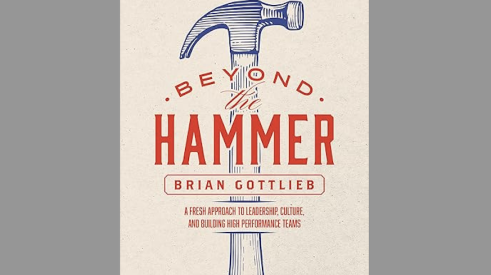John Aurgemma, president of Rhode Island Home Improvement, tells the story of the salesperson who retired from the company at age 75. Six months later, the retiree’s wife called to ask if RIHI would take him back. “He was driving her nuts,” Aurgemma says. He came back to RIHI part-time, then retired again at 80. Again, six months later, the wife called. “His shoulder was screwed up and he couldn’t swing a golf club,” Aurgemma says. But he could run sales appointments. He came to work there a third time to coach new salespeople at the Warwick, RI company, founded by Aurgemma’s father and now in its sixth decade of doing business. “He worked here till a month before he died.”
Boomerangs The New Normal
Should your company be open to hiring past employees? And if so, should you seek out, or at least stay in touch with, those now referred to in HR circles as “alumni?”
Before you say “Forget it,” consider that most home improvement companies of any size are scrambling for workers in all departments these days—including admin and sales but especially installation—and many have high-performing “alumni” they would love to hire back.
Until recently, many businesses frowned on—or outright prohibited—hiring people who once worked there but left, even under good terms. They were regarded as disloyal. Today re-hires happen often enough to have a name—Boomerang employees (a.k.a. Comeback Kids)—and companies that once spurned the idea of rehiring those who previously worked there often eagerly welcome them back. Retirees included.
“Fortunately, most employers today understand that loyalty doesn't go away when employees walk out the door,” writes LinkedIn vice president Brendan Browne in a Business Insider article. “Rather, it can stay with them throughout their careers and flourish over time as they navigate the workforce.” Which is why, he argues, Boomerang employees are becoming “the new normal.” Last year, in an article in Forbes, writer Kerry Hannon cited a study of 1800 employees, managers and HRprofessionals designed and conducted by Workplace Trends and the Workforce Institute at Kronos. The study shows that:
- half of HR professionals said their organizations previously had a policy against hiring former employees, whereas 76 percent say they are now more accepting of hiring previous employees than in the past;
- 15 percent of those in the study had ‘Boomeranged’ back to a previous employer, and 40 percent said they would consider it.
Instant Fit
There are lots of reasons to re-hire former employees, assuming they left on good terms. The person who worked there five years ago and wants to come back not only knows your organization and how it operates, but now has other skills and often different perspectives. The typically translates to greater commitment. Wayne Winn, owner of Home Town Restyling, a home improvement company in Cedar Rapids, Iowa, says he has had three people who left and came back. “And they’re fantastic employees.”
Blogging website hrgirlfriends.com lists some good reasons to hire boomerang employees: “… this is a person that the organization knows. Furthermore for the employer, a boomerang can increase engagement, decrease disengagement, and increase morale… The employee knows the culture, will most likely need less basic training … Additionally, since a boomerang is a near insider, it may cost the organization less financially to bring them back.”
The investment in hiring a boomerang employee might be a third to, at most, two-thirds of what it might be otherwise. For instance, no one needed to explain to that salesperson who came back to Rhode Island Home Improvement how the commission structure works, how leads were distributed, or how, for that matter, the in-home sale of an exterior renovation project is successfully conducted. He was glad to be back, doing what he’d always done well.
Cautionary Note
So Boomerangs know the culture and they know the competition. But that doesn’t mean former workers should be hired automatically. “Like any other candidate, boomerang employees need to go through the interview and onboarding process to make sure they’re the right fit for the job,” Nicole Fallon Taylor suggests, in Business News Daily.
Since your goal in this, as in any hire, is a successful and long-term employment relationship, you’ll want to know a few things that would be irrelevant under other circumstances, as blogger Katie Whiting points out on recruitment website SelectOne. She suggests that you talk with former coworkers at your company to assess past performance and that you also dig into the original reasons for leaving: “Was it a financial issue? Restricted growth? A poor cultural fit? Understanding the issues, and whether or not you now have solutions, is very important to predicting the future satisfaction of this individual,” she writes.
Why do they come back? The Workplace Trends study found that the two top reasons—tied, at 20 percent each—were better benefits and a better career path. And that differed sharply by age. The boomerang trend, in fact, is driven by Millennials in the workforce, and not everyone’s signing on. A study of 1,000 full- and part-time employees by Spherion Staffing Services found that “…one in three workers Spherion surveyed reported they would not consider going back to a previous company, deeming such a move either a ‘step back’ in their career or considering the company culture a bad fit.”
Add new comment
Related Stories
3 Areas Successful Remodelers Focus On
Industry advisor Mark Richardson shares what separates the losing from the winning in today’s market
Peppermill Finish
NAHB: Remodelers Face Challenges and Opportunities
Remodelers face a uniquely strong market yet remain challenged by codes and costs
Selling Your Company to Your Team
From company valuation to terms of the transfer, here’s a look at how three different remodelers made the deal work
Re-Bath Expands its Reach with New Franchise
The company signs a deal with brothers who are first-time franchisees
Pro Remodeler’s 2024 Pinnacle Experience Reaches New Heights
The sold-out event covered leadership, lead gen, sales, and technology
Brian Gottlieb Receives Remodeling Mastery Award
Presented by industry icon, Mark Richardson, the award celebrated Gottlieb’s extraordinary impact on remodeling
What's Beyond the Hammer?
Working with Brian Gottlieb on the book Beyond the Hammer provided a masterclass on how to build an aligned team
5 Counterintuitive Strategies to Improve Your Business
Follow these strategies to inspire employees, instill trust, and beat the competition
Couple Act As Much More Than General Contractors
How LBR Partners uplifts and educates their Spanish-speaking trade partners












